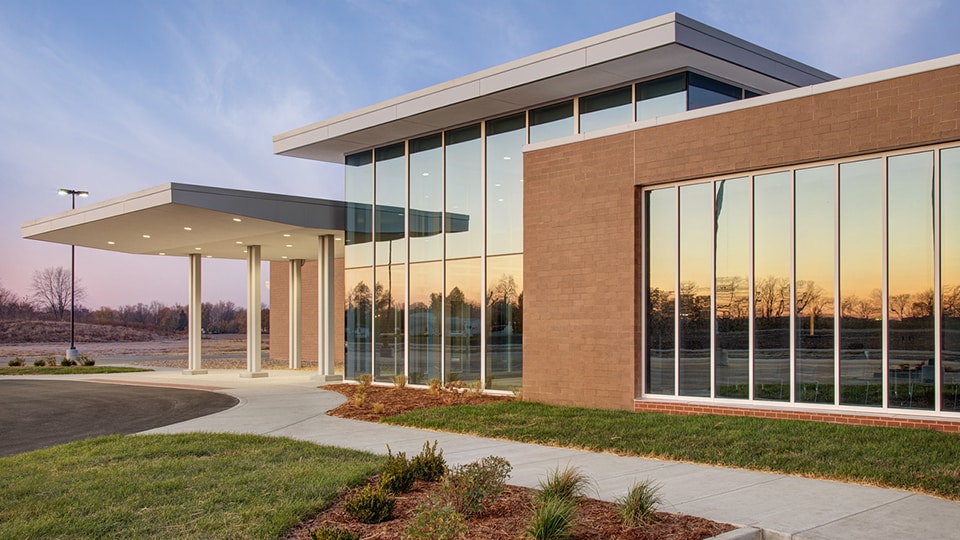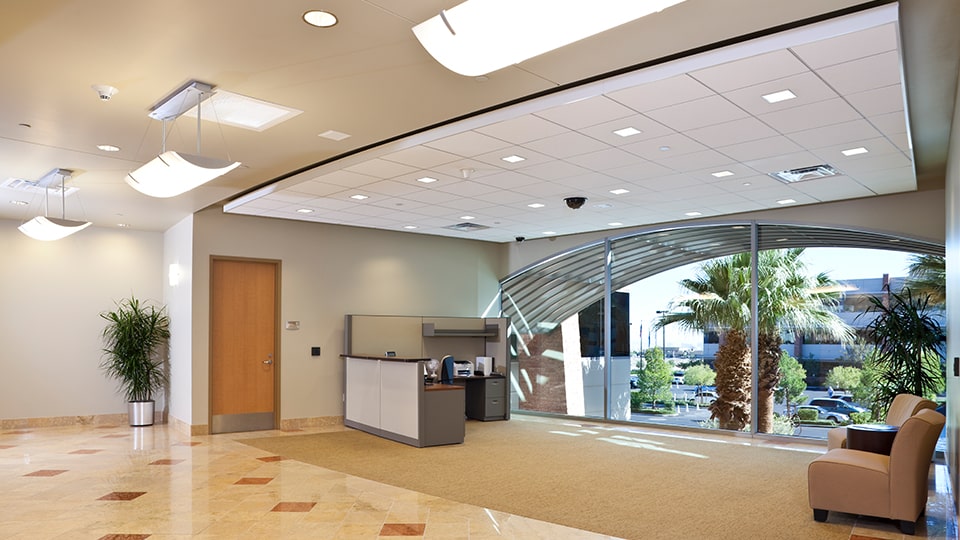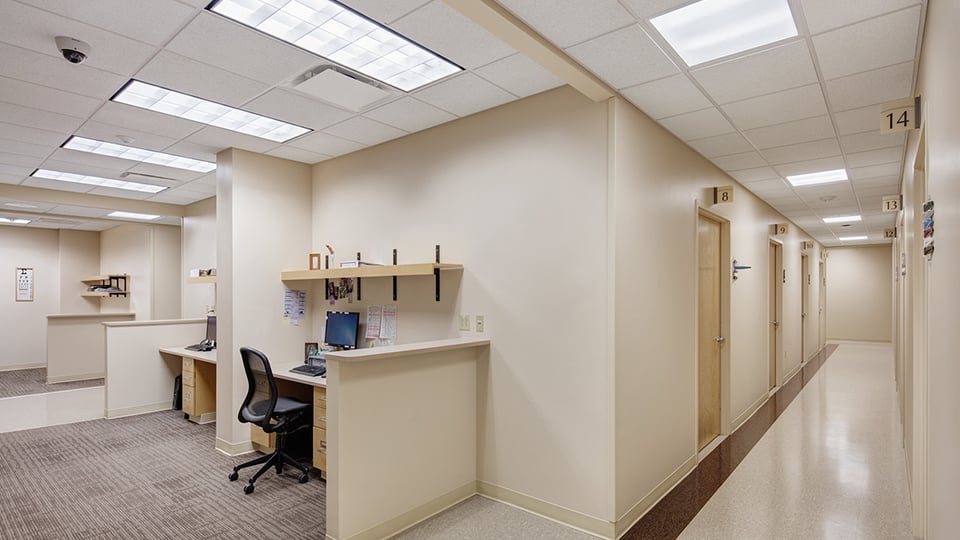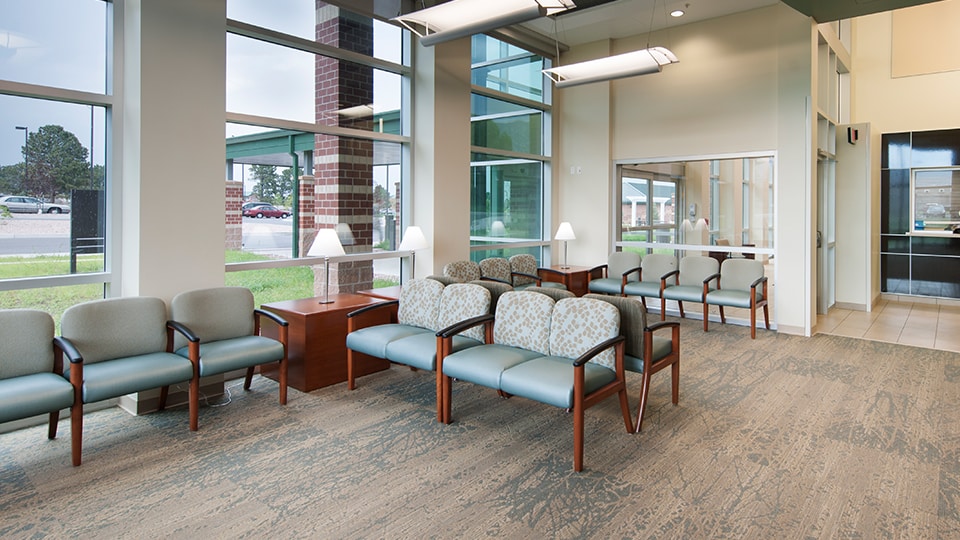The healthcare industry is evolving rapidly, and the result has been a corresponding evolution in the way healthcare construction companies design and build modern healing spaces.
The Design-Build construction delivery method is on the leading edge because enhanced communication, design innovation, cost savings and faster delivery are inherent in the process. Each of these has become critically important in today’s healthcare climate.
From the largest regional healthcare systems to the smallest community clinics, leaders across the U.S. are seeing that healthcare Design-Build construction turns inert structures into true assets that work in concert with medical professionals to deliver high-quality care.

Everyone’s on the same page from day one
The most fundamental advantage of Design-Build is that the design and construction disciplines are kept under the same roof. With a single point of contact, decision makers can communicate with everyone involved on a project with a single conversation.
When leaders spend less time juggling meetings and calls, they can stay focused on their core responsibility: Delivering the best care possible to patients.
But this benefit of Design-Build reaches deeper than just the interactions of the construction team and the customer. Internally, it assures that the design and construction teams are in constant communication as they work toward the common goal of delivering a premium healing space on-time and on-budget. There’s no conflict, only cooperation.

How high-tech modeling and estimating adds value and builds trust
Early adoption of digital modeling and estimation software has amplified the Design-Build method’s ability to drive value on healthcare construction projects.
Leading the way is 5D Macro BIM, software that combines computer-aided design with detailed estimation. Its wide-ranging benefits include:
- Design capability that allows contractors and customers to visualize projects earlier in the project timeline.
- Estimation calculations based on extensive material and labor cost data, making estimates more reliable and realistic.
- Alternative designs or design change requests can be made much faster, reducing overall design time and empowering customers to make critical construction decisions faster.
- Access to a huge database of materials and methods that allows design and build teams to search for cost savings and innovate while work is in progress.
- The software is a useful collaboration tool that enhances transparency and builds trust between owners and contractors.
The Korte Company is committed to providing accurate information to customers at all stages of their project. The high-tech tools we bring to every job help fine-tune customers’ strategies to maximize their healthcare construction investment.
Design-Build values stakeholder advice
If you ask us, nothing beats the human element. The tools we mentioned above are great, but contractors shouldn’t use them exclusively. Old-fashioned face-to-face conversations with key stakeholders are gold mines loaded with important insights.
Doctors, nurses and staff are among those whose perspective we seek to build successful healthcare facilities. By understanding their unique needs and workflows, we design and build spaces that help them perform at their best. Seeing our work through patients’ eyes is crucial, too. On hundreds of projects across the U.S., we’ve learned that designing to maximize care and comfort goes a long way in improving patient outcomes.

Here are some examples of how stakeholder advice figures into healthcare construction:
- Doctors and nurses need floorplans that enhance their ability to deliver care, not stand in the way. That’s why hospitals and other facilities feature wide floorplans and strategic placement of shared supplies.
- Hospital support staff play a critical role in keeping the wheels turning in any facility. We lean on these personnel to design and build spaces that help them do their behind-the-scenes work effectively without disrupting patient care.
- Patients and visitors usually don’t want to be in hospitals. The way we see it, the look and feel of a space can help them make the best of a crummy situation. Our interior design teams are experts in crafting spaces that enhance the comfort of patients and their families and friends.
Streamlined healthcare construction
Another crucial advantage of Design-Build is that the consolidation of design and construction disciplines into a single team means work progresses faster. Design-Build projects typically break ground earlier in the timeline. In fact, our teams can start preparing the ground ahead of construction several weeks before a design is finalized.
The cost savings this makes possible is magnified by the fact that starting projects sooner means facilities open sooner. As the American healthcare system evolves, competition is fierce. Design-Build increases speed to market and improves patient accessibility to quality care. Both are benefits healthcare leaders cannot ignore.

Keeping healthcare facilities in operation
The important work of hospitals and clinics can’t take days off. People’s health depends on these facilities staying in operation, even during a construction project.
That’s why Design-Build is so well suited for healthcare construction projects. Our teams study your facility in depth to identify the least disruptive ways to complete our work while you do yours. During daytime hours, we coordinate with facility staff to ensure the safety of patients and staff alike while keeping our disruptions to a minimum. And if it’s critical that we not be there during the day at all, that’s no problem. We’ll work on nights and weekends and then clean up as though we were never there.
Close communication, interdisciplinary collaboration and a focus on flexibility are all baked into healthcare Design-Build. No other delivery method is nimble enough to match the complex choreography it takes to operate an effective healthcare facility.
The Korte Company has vast experience completing construction projects while keeping facilities operational. Nowhere was this more important than during construction of Medical Office Building ‘B’ at Alton Memorial Hospital in Alton, Illinois.
Choose five decades of healthcare Design-Build experience
The Korte Company pioneered healthcare Design-Build. In fact, our first Design-Build project was completed back in 1963 when we built a modern senior living facility in our hometown of Highland, Illinois.
Since then, we’ve tallied over $2 billion of healthcare construction business across the U.S. With each job we complete, we become a better, more thoughtful builder. After all, healthcare construction is about creating spaces that heal. Getting it right requires the kind of commitment our company was founded on 60 years ago: Do right by your customer.
If you’re considering a healthcare construction project, give Design-Build some thought. We’re ready to walk you through the process and answer your questions, so let’s talk. If you want to keep researching, you’ll probably find our start to finish guide to healthcare construction quite useful.
